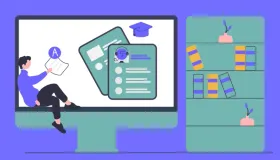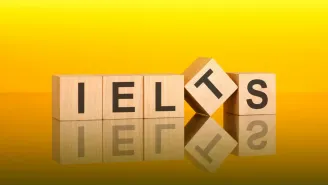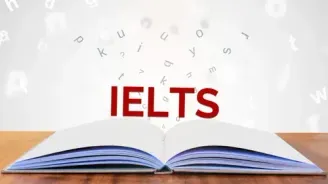The Hidden Histories Of Exploration Exhibition Reading Answer Passage
The Hidden Histories Of Exploration Exhibition Reading Answer Passage
Paragraph A. We have all heard tales of lone, heroic explorers, but what about the local individuals who guided and protected European explorers in many different parts of the globe? Or the go-betweens – including interpreters and traders – who translated the needs and demands of explorers into a language that locals could understand? Such questions have received surprisingly little attention in standard histories, where European explorers are usually the heroes, sometimes the villains. The Hidden Histories of Exploration exhibition at Britain’s Royal Geographical Society in London sets out to present an alternative view, in which exploration is a fundamentally collective experience of work involving many different people. Many of the most famous examples of explorers said to have been ‘lone travellers’ – say, Mungo Park or David Livingstone in Africa – were anything but ‘alone’ on their travels. They depended on local support of various kinds – for food, shelter, protection, information, guidance, and solace – as well as on other resources from elsewhere.
Paragraph B. The Royal Geographical Society (RGS) seeks to record this story in its Hidden Histories project, using its astonishingly rich collections. The storage of geographical information was one of the main rationales for the foundation of the RGS in 1830, and the Society’s collections now contain more than two million individual items, including books, manuscripts, maps, photographs, art-works, artefacts, and film – a rich storehouse of material reflecting the wide geographical extent of British interest across the globe. In addition to their remarkable scope and range, these collections contain a striking visual record of exploration: the impulse to collect the world is reflected in a large and diverse image archive. For the researcher, this archive can yield many surprises: materials gathered for one purpose – say, maps relating to an international boundary dispute or photographs taken on a scientific expedition – may today be put to quite different uses.
Paragraph C. In their published narratives, European explorers rarely portrayed themselves as vulnerable or dependent on others, despite the fact that without this support, they were quite literally lost. Archival research confirms that Europeans were not merely dependent on the work of porters, soldiers, translators, cooks, pilots, guides, hunters, and collectors; they also relied on local expertise. Such assistance was essential in identifying potential dangers of poisonous species, unpredictable rivers, and uncharted territories – which could mean the difference between life and death. The assistants themselves were usually in a strong bargaining position. In the Amazon, for example, access to entire regions would depend on the willingness of local crew members and other assistants to enter areas inhabited by relatively powerful Amerindian groups. In an account of his journey across South America published in 1836, William Smyth thus complained of frequent desertion by his helpers: without them, it was impossible to get on.
Paragraph D. Those providing local support and information to explorers were themselves often not ‘locals’. For example, the history of African exploration in the nineteenth century is dominated by the use of Zanzibar as a recruiting station for porters, soldiers, and guides who would then travel thousands of miles across the continent. In some accounts, the leading African members of expedition parties – the ‘officers’ or ‘foremen’ – are identified, and their portraits are published alongside those of European explorers.
Paragraph E. The information provided by locals and intermediaries was of potential importance to geographical science. How was this evidence judged? The formal procedures of scientific evaluation provided one framework. Alongside these were more ‘common sense’ notions of veracity and reliability, religiously inspired judgments about the authenticity of testimony, and the routine procedures for cross-checking empirical observations developed in many professions.
Paragraph F. Given explorers’ need for local information and support, it was in their interests to develop effective working partnerships with knowledgeable intermediaries who could act as brokers in their dealings with local inhabitants. Many of these people acquired far more experience in exploration than most Europeans could hope to attain. Some managed large groups of men and women, piloted the explorers’ river craft, or undertook mapping work. The tradition was continued with the Everest expeditions in the 1920s and 1930s, which regularly employed the Tibetan interpreter Karma Paul. In Europe, exploration was increasingly thought of as a career; the same might be said of the non-Europeans on whom their expeditions depended.
Paragraph G. These individuals often forged close working relationships with European explorers. Such partnerships depended on mutual respect, though they were not always easy or intimate, as is particularly clear from the history of the Everest expeditions depicted in the Hidden Histories exhibition. The entire back wall is covered by an enlarged version of a single sheet of photographs of Sherpas taken during the 1936 Everest expedition. The document is a powerful reminder of the manpower on which European mountaineering expeditions depended and also of the importance of local knowledge and assistance. Transformed from archive to wall display, it tells a powerful story through the medium of individual portraits – including Karma Paul, a veteran of previous expeditions, and the young Tensing Norgay, 17 years before his successful 1953 ascent. This was a highly charged and transitional moment as the contribution of the Sherpas, depicted here with identity tags around their necks, was beginning to be much more widely recognised. These touching portraits encourage us to see them as agents rather than simply colonial subjects or paid employees. Here is a living history, which looks beyond what we already know about exploration: a larger history in which we come to recognise the contribution of everyone involved.
Let’s explore the questions and answers of The Hidden Histories Of Exploration Exhibition Reading passage.
The Hidden Histories Of Exploration Exhibition Reading Questions and Answers
Have you read the passage? Now, take the test and find The Hidden Histories Of Exploration Exhibition Reading answers! Try to answer these questions by yourself before you sneak a peek at the answers given below.
Check Out Top 30 IELTS Reading Practice Test Questions with Answers
Below are some top 30 free IELTS Reading Practice test online questions with detailed answers to enhance your IELTS preparation online. We have provided sample passages for each test type for your reference.
- What Is Exploration Reading Answers
- Effects Of Noise Reading Answers
- The Discovery Of Baby Mammoth Reading Answers
- The Dead Sea Scrolls Reading Answers
- The Ring-Tailed Lemur Reading Answers
- Why We Need To Protect Polar Bears Reading Answers
- Nutmeg A Valuable Spice Reading Answers
- What Is Meaning Reading Answers
- Cutty Sark Reading Answers
- The Step Pyramid Of Djoser Reading Answers
- South Pole Adventurer Reading Answers
- The Future Of Work Reading Answers
- Ambergris Reading Answers
- Trees In Trouble Reading Answers
- Could Urban Engineers Learn From Dance Reading Answers
- The Flavour Of Pleasure Reading Answers
- The Value Of A College Degree Reading Answers
- Why You Should Delegate Tasks To Team Members Reading Answers
- Corporate Social Responsibility Reading Answers
- Forest Management In Pennsylvania USA Reading Answers
- Making Time For Science Reading Answers
- The Power Of Play Reading Answers
- Coastal Archaeology Of Britain Reading Answers
- How The Other Half Thinks Reading Answers
- Changes In Reading Habits Reading Answers
- The Forgotten Forest Reading Answers
- When Conversations Flow Reading Answers
- Attitudes Towards Artificial Intelligence Reading Answers
- The Ingenuity Gap Reading Answers
- A Bar At The Folies Reading Answers
- Booking A Wessex Cottages Holiday Reading Answers
- Sunset Tours Reading Answers
- Bird Migration Reading Answers
- Clutter Bugs Beware Reading Answers







